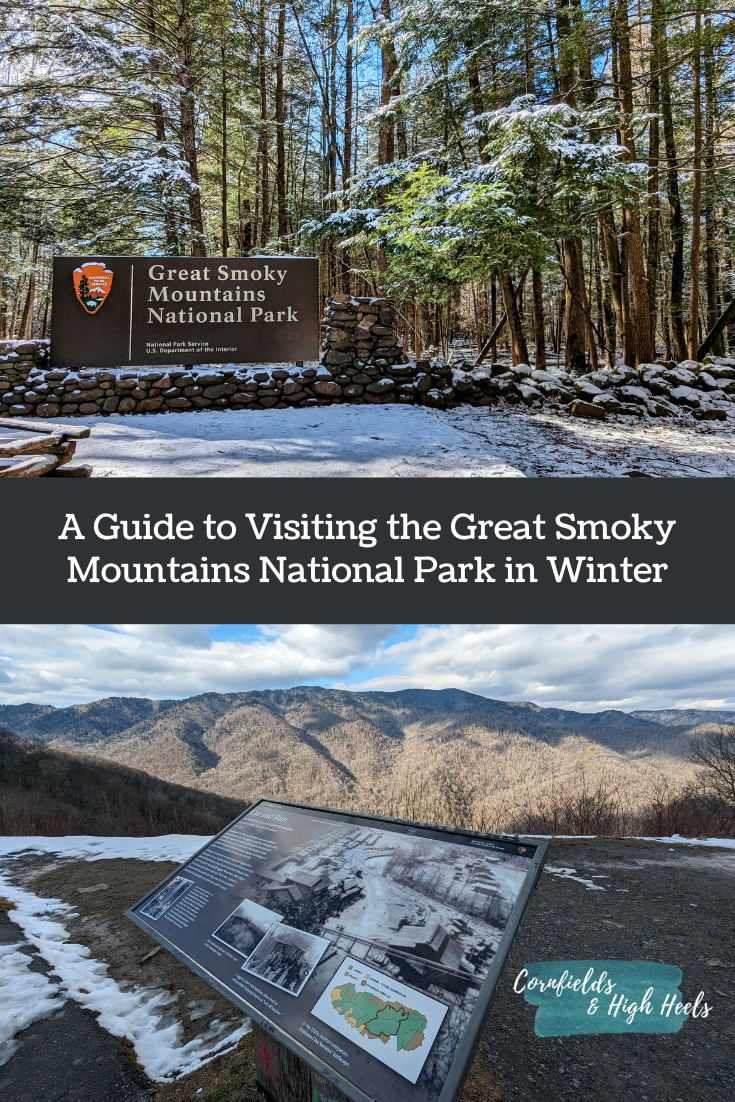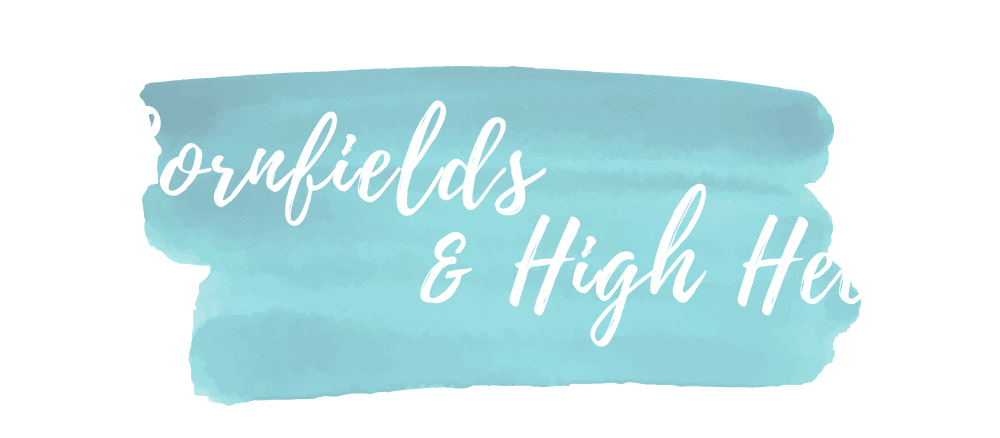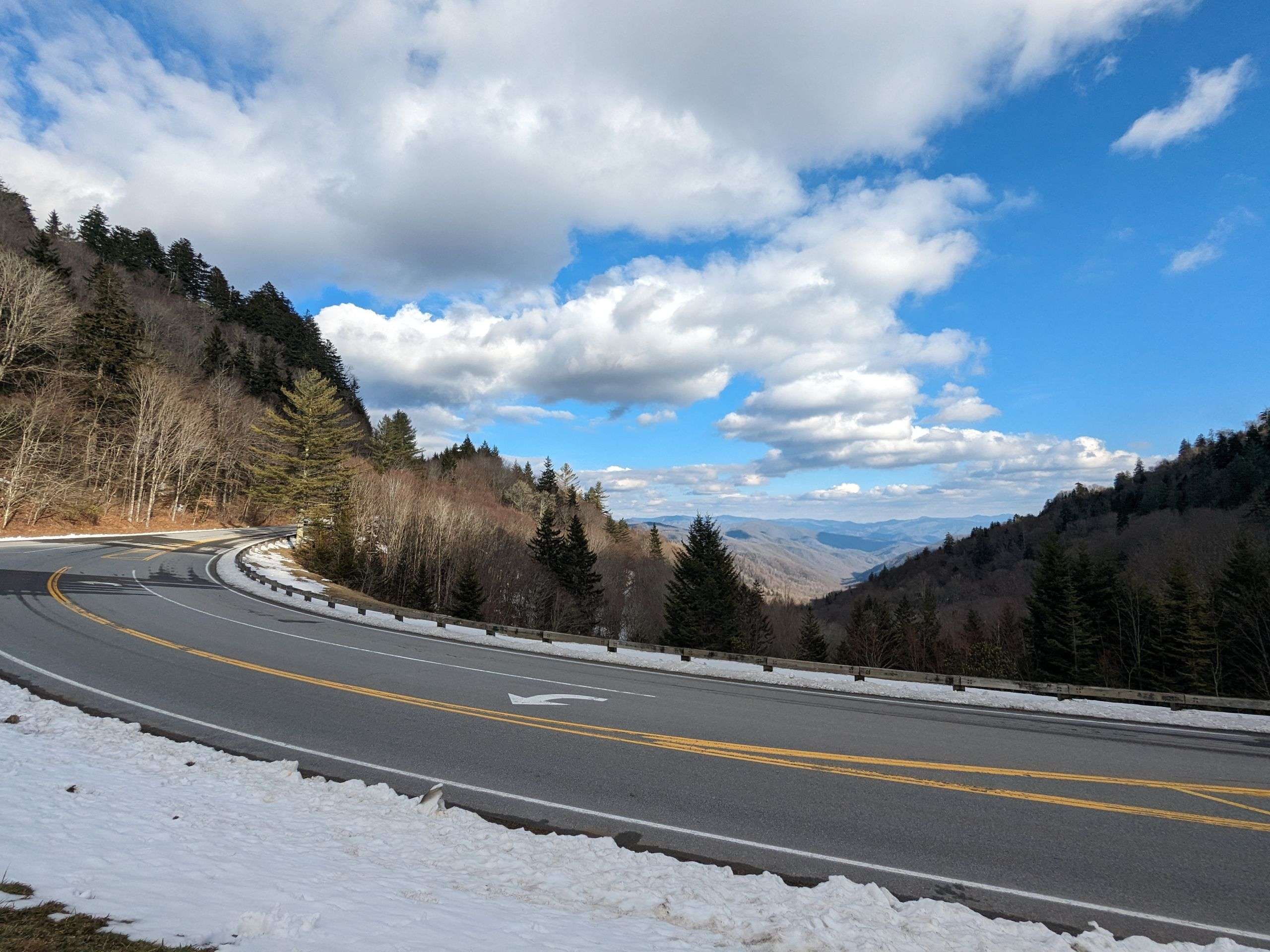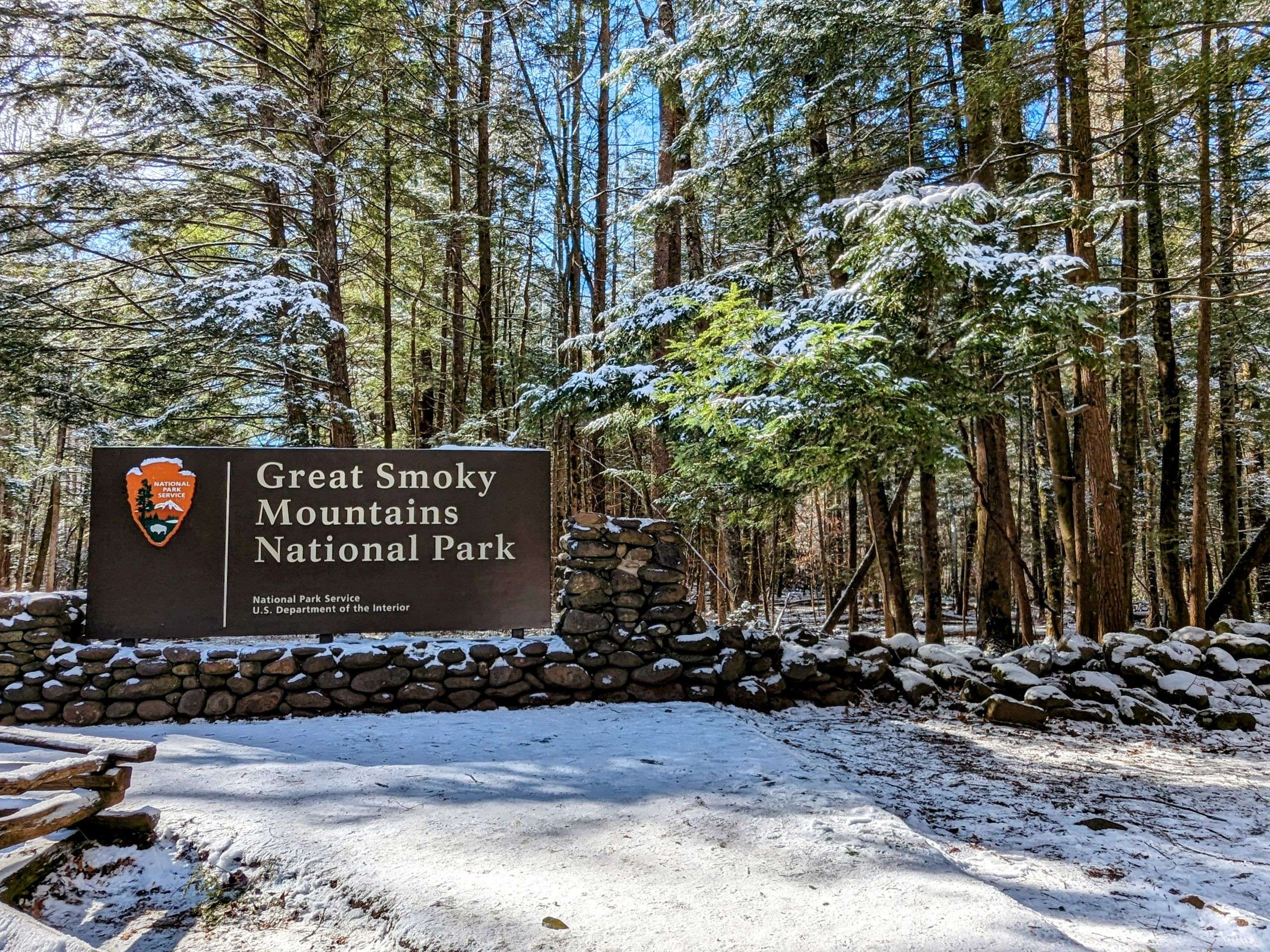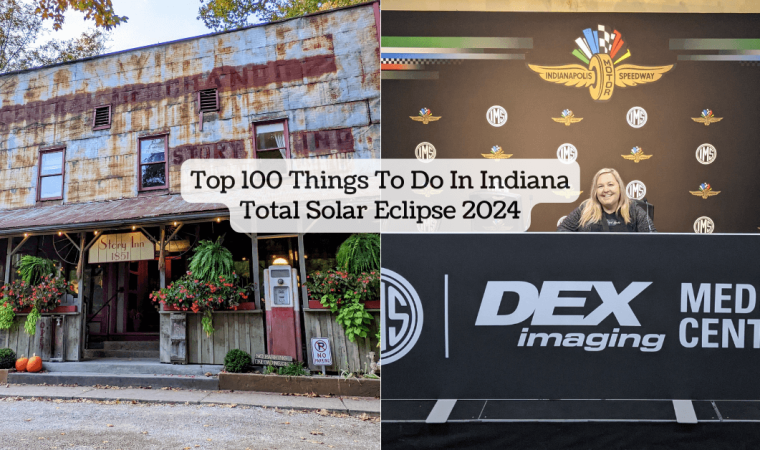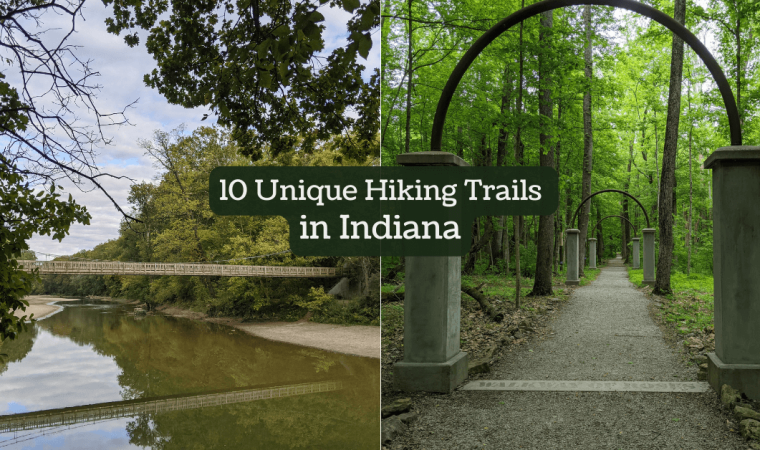Great Smoky Mountains National Park in Winter
A winter visit to the Great Smoky Mountains National Park (GRSM), also known as “The Smokies,” is peaceful, quiet, and less crowded. The winter season transforms the mountains and footlands into a magical wonderland, offering visitors a unique and enchanting experience. As the temperatures drop and the snow falls, the park takes on a serene and peaceful atmosphere, making it a tranquil escape.
During my visit to the Smoky Mountains, I had the opportunity to spend several full days exploring the park’s natural beauty. I could have easily spent even more time there. However, the weather in the offseason can be unpredictable, as I discovered firsthand. A sudden snowstorm swept through the area and caused the park to close for two weeks. Fortunately, I was on a more extended road trip and could return to the park later in my journey. While the roads and trails were temporarily closed due to the weather conditions, the Visitors Center remained accessible, along with some walkable trails. When planning your trip to the park, keep a close eye on the weather forecast.
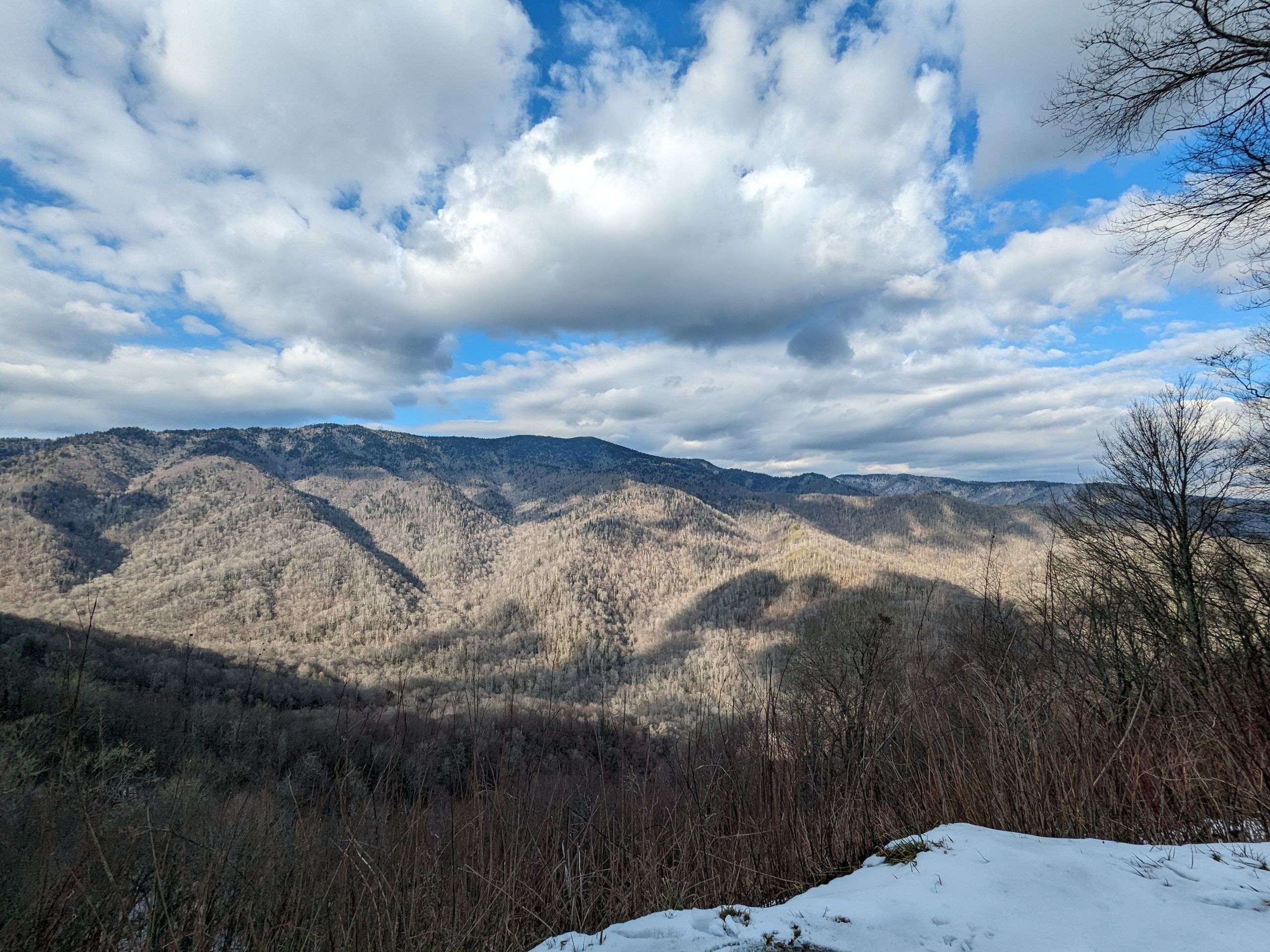
Disclaimer: Blog posts may contain affiliate links and ads. If you click on these links, I may earn a small commission. This helps keep the blog running and supports me – at no cost to you. If you have any questions, please read my disclaimer and privacy policy. All opinions in this article are my own.
Top Reasons for Visiting in the Winter
Breathtaking Landscapes: The Smokies’ year-round beauty is undeniable, particularly when adorned with a blanket of snow. The contrast of snow-capped peaks and glittering waterways paints a picture-perfect, captivating winter scene. The bare trees transform trails in the wintry landscape, revealing previously hidden vistas and history. Stone walls, chimneys, foundations, and other remnants of bygone residents emerge from their leafy concealment.
Interestingly, within the same region, you can experience vastly different climates. When the foothills have mild temperatures, just a short distance away, at a higher elevation, sometimes the conditions can be 30 degrees colder, transforming the landscape into a winter wonderland.
Fewer Crowds: Winter has reduced crowds in the park. This means you can enjoy nature without the hustle and bustle of large crowds, making it ideal for a peaceful experience. It’s tranquil! You’ll find the weekdays to be the quietest times to visit.
Unique Wildlife Encounters: In the Great Smoky Mountains National Park, while some animals hibernate during winter, others remain active. While exploring the snowy landscapes, keep a lookout for animal tracks and sightings of deer, elk, bears, and other wildlife while keeping a 150 feet distance (it’s the law!).
Wildlife is more visible in the winter, with the trees being bare. The open areas in Cataloochee and Cades Cove (sometimes closed with winter weather conditions) are the best for seeing deer, elk, and bears. The winding road of Roaring Fork Motor Nature Trail sometimes offers sightings of bears.
Stunning Photography Opportunities: The park provides endless opportunities for capturing stunning photographs. Whether you’re an amateur or a professional photographer, the opportunities are endless. For commercial or wedding photography, you will need to obtain a permit)
Starry Night Skies: The night skies offer a great show when light pollution is reduced. The crisp, clear sky becomes a canvas with a dazzling array of stars and constellations. It’s an awe-inspiring sight that left me uttering words of wonder – “Wow!”
Tips for Visiting in the Winter
- Check the NPS website for road conditions and closures in advance.
- Before entering the park, make sure to obtain a parking tag. You must buy a parking tag if you intend to park for longer than 15 minutes. The Visitors Center offers outdoor tag machines or indoor purchase options. The daily rate is $5, while the weekly rate is $15. Have your license plate number ready!
- Remember to come prepared for winter conditions by bringing warm clothing, waterproof footwear, and any necessary gear for the activities you plan to enjoy. I recommend a hiking stick if you plan to hike.
- There is no wifi in the park or cell phone service (several different carriers verified this).
- For a more enjoyable experience with fewer visitors and easier parking, consider visiting during the midweek, early mornings, or late afternoons.
- For accessible trails, check out the Little River Trail, TN (0.9 miles) and the Bradley Fork Trail, NC (3.9 miles)
- The park allows nature to determine trail conditions. Be prepared for swollen streams, bridge washouts, downed trees, and trail erosion, especially in the winter.
- Plan your hiking times accordingly; the sun sets just after 5:00 p.m. in the winter. For your safety, do not hike at night. Let someone know your route and return time. Have them contact the park at (865) 436-1230 if you do not return within a reasonable time.
- Take a bear safety course before visiting the park, especially if you plan to hike or spend time within the park. These are free and available online.
- Ranger-led programs are not available in the winter.
@fieldsandheels ⛰️ The Smokies 📍 The Great Smoky Mountains National Park I visited both the Tennessee and North Carolina sides, and drove 441 from Cherokee, NC to Gatlinburg, TN through the National Park. Spending a full 2 days in the park exploring all the overlooks and best spots. Visiting the Smoky Mountains in the winter, here are a few tips: ⛰️ The weather is unpredictable. At any time there could be road closures in the winter. Prior to my visit, the park was closed for 2 weeks. ⛰️ Clingmans Dome is closed in the winter. ⛰️ There is easily a drastic temperature difference when you are at different elevations in the park. Dress accordingly. ⛰️ The Oconaluftee Visitor Center on the NC side has a fantastic history exhibit & outdoor museum. You can also see elk here. ⛰️ The elk are more visible on the NC side. And best seen at dawn and dusk. DO NOT ever approach the elk. #greatsmokymountains #fieldsandheels #thesmokies #smokymountains #greatsmokymountainsnationalpark #gaitlinburg #cherokeenc #roadtrip #mountains #travelforlive #travelwriter #tennessee #northcarolina #tennesseemountains
Before You Visit: Facts and Info Worth Knowing

Black bears. It’s noteworthy that bears, in contrast to popular perception, do not enter a state of hibernation during the winter season. Although they experience a reduced level of activity and increased sleep in their dens, mother bears commonly give birth during the period spanning from January to February.
Important rules. A few National Park rules and regulations to keep in mind:
- Picking plants or removing any objects is prohibited.
- Dogs and other pets (except service animals) are also prohibited (they are allowed on the Gatlinburg Trail and the Oconoluftee River Trail.
- Feeding wildlife is prohibited.
- Metal detectors and mineral detectors are not permitted.
- Drones and other unmanned aircraft are not permitted within the park’s boundaries.
Clingmans Dome. A popular attraction within the park is Clingmans Dome, the highest point. It provides breathtaking 360-degree panoramic vistas of the stunning Smoky Mountains. While it is accessible via a short drive followed by a moderately challenging half-mile hike, visitors should be aware of potential closures. The site is typically closed during the winter months, from early December through late March, and during adverse weather conditions for safety reasons. Temperatures at the dome can be 10-20 degrees cooler than in the surrounding lowlands.
Visitors Centers. Four visitor centers are located within the national park at Sugarlands, Oconaluftee, Cades Cove, and Clingmans Dome (closed in the winter). The centers have reduced hours in the winter. The Oconaluftee Visitor Center in Cherokee, NC, is my favorite for its view, cultural history exhibits, and the Mountain Farm Museum. The museum consists of a collection of log structures, including a farmhouse, barn, smokehouse, apple house, corn crib, and others. It’s also a popular spot for spotting elk.
Pin it for later!
